Functional Kettlebell Training: Enhance Your Strength and Agility
Have you ever wondered how some fitness enthusiasts seem to effortlessly blend strength, flexibility, and agility into their workouts? The answer lies in functional kettlebell training – a dynamic approach that not only builds muscle but also improves overall physical performance. Whether you’re a seasoned athlete looking to enhance your game or a beginner aiming to boost your fitness levels, understanding the principles of it can revolutionize your workouts.
In this comprehensive guide, we will delve into the fundamentals of this brilliant training, exploring its benefits, techniques, and practical applications. By the end of this article, you’ll have a clear understanding of why incorporating kettlebells into your routine can lead to significant improvements in strength, endurance, and functional fitness.
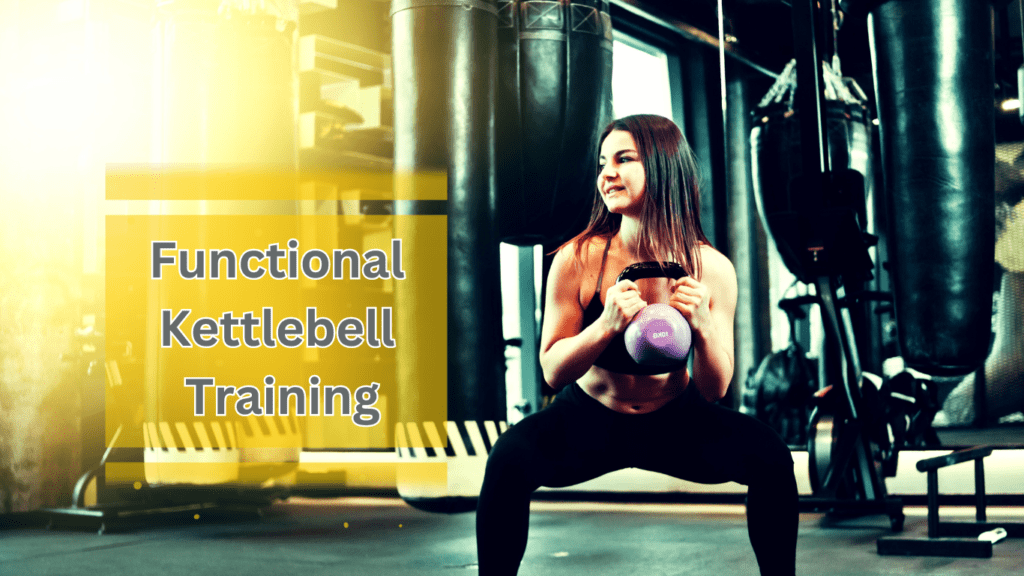
Why Functional Kettlebell Training Matters
Unlike traditional weightlifting exercises that isolate specific muscle groups, this training focuses on movements that mimic real-life activities. These movements engage multiple muscle groups simultaneously, promoting better coordination and balance. Whether you’re swinging, pressing, or squatting with a kettlebell, every exercise challenges your body in ways that translate directly to daily activities and sports.
The versatility of kettlebells allows for a wide range of exercises that target different aspects of fitness, from cardiovascular endurance to core stability. By incorporating it into your regimen, you not only build strength but also improve flexibility and joint mobility. This holistic approach to fitness ensures that you’re not just lifting weights but enhancing your body’s ability to perform everyday tasks with ease.
What You Will Learn
Throughout this article, we will explore various aspects of functional kettlebell training:
- Basic Techniques: Master foundational kettlebell exercises such as swings, cleans, and snatches.
- Benefits: Understand how functional kettlebell training improves strength, endurance, and overall functional fitness.
- Safety: Learn essential tips for proper form and injury prevention when using kettlebells.
- Programming: Discover effective ways to integrate kettlebell workouts into your existing routine for maximum results.
- Progression: Explore advanced techniques and variations to continually challenge your body and avoid plateaus.
By the end of this guide, you’ll be equipped with the knowledge and confidence to harness the power of kettlebells effectively in your fitness journey. Whether your goal is to build muscle, shed pounds, or simply enhance your physical capabilities, it offers a pathway to achieving optimal fitness.
Subscribe And Get Our Free E-Book:Unlocking The Power Of Nutrition-Supplements, Substitutes, and Superfoods!
Stay tuned as we unravel the secrets behind functional kettlebell training, empowering you to elevate your workouts and transform your body. Ready to embark on a journey that combines strength, functionality, and practicality? Let’s dive into the world of functional kettlebell training and discover how these simple yet powerful tools can revolutionize your fitness routine.
What Is It?
In the realm of fitness, where techniques and trends come and go, functional kettlebell training stands out as a timeless and effective method to achieve overall strength and agility. But what exactly makes kettlebell training “functional,” and why should it be an integral part of your workout regimen?
What is Functional Kettlebell Training?
It revolves around exercises that mimic everyday movements, emphasizing whole-body engagement rather than isolating specific muscles. Unlike traditional weightlifting, which often focuses on muscle groups in isolation, it integrates movements that promote coordination, balance, and core strength simultaneously. Whether you’re swinging, pressing, or performing Turkish get-ups with a kettlebell, each exercise challenges multiple muscle groups in a way that translates directly to real-life activities.
The key to understanding the functional aspect lies in how kettlebell exercises engage the body as a cohesive unit. By incorporating dynamic movements that require coordination and stability, it helps improve overall physical performance, making daily tasks easier and enhancing athletic prowess.
Benefits of Functional Kettlebell Training
The benefits of this training extend beyond mere muscle development. Here are some of the unique advantages:
- Improved Mobility: Kettlebell exercises often involve full-body movements that enhance joint mobility and flexibility. Unlike static weight machines, which limit range of motion, kettlebells promote fluid movements that improve overall mobility.
- Enhanced Stability: Many kettlebell exercises require maintaining balance and stability, especially during dynamic movements like swings and snatches. This enhances core strength and stability, crucial for preventing injuries and improving posture.
- Increased Strength: While traditional strength training builds muscle mass, functional kettlebell training focuses on developing functional strength. This means your muscles work together more efficiently, translating to better performance in daily activities and sports.
- Real-life Applicability: The movements in it simulate activities we encounter in everyday life, such as lifting, carrying, and reaching. By practicing these movements with resistance, you not only strengthen your muscles but also improve your ability to perform these tasks safely and effectively.
Pavel Tsatsouline: Whole Body Benefits of Kettlebell Training Video
The Science Behind It
Biomechanically, functional kettlebell training utilizes natural movement patterns that engage multiple joints and muscles simultaneously. For instance, a kettlebell swing incorporates a hip hinge motion that mimics picking up an object from the ground. This movement not only strengthens the glutes, hamstrings, and core but also teaches proper mechanics for lifting objects in daily life.
Moreover, kettlebell exercises like the Turkish get-up integrate movements across different planes of motion, promoting functional strength and stability in various positions. These exercises challenge proprioception (awareness of body positioning) and improve neuromuscular coordination, which are essential for balance and injury prevention.
Research supports the effectiveness of it in improving cardiovascular fitness, muscular endurance, and overall functional capacity. Studies have shown that kettlebell exercises can lead to significant improvements in strength and power, making them a valuable tool for athletes and fitness enthusiasts alike.
Functional kettlebell training offers a holistic approach to fitness that goes beyond traditional weightlifting. By focusing on movements that enhance mobility, stability, and strength, kettlebell exercises prepare your body for the demands of daily life and sport. Whether you’re aiming to improve your athletic performance or simply enhance your overall fitness, integrating it into your routine can yield transformative resulults.
A Journey Through History and Evolution
Ah, the mighty kettlebell – a piece of fitness equipment that’s as timeless as it is effective. But where did these cannonball-like weights with handles originate, and how did they become a cornerstone of functional kettlebell training? Let’s take a whimsical yet insightful journey through the history and evolution of kettlebell training, exploring its origins and its role in modern fitness.
Origins of Kettlebells
The story of kettlebells begins centuries ago in Russia, where they were originally used as counterweights for weighing crops in marketplaces. Legend has it that enterprising Russians discovered these weights were not only practical for commerce but also handy for showing off feats of strength. Soon, kettlebells found their way into the hands of strongmen and soldiers, who used them to build robust physical capabilities.
The term “kettlebell” itself is derived from the Russian word “girya,” meaning a weight with a handle. Over time, kettlebells became a staple in Russian physical culture, with various forms of lifting and swinging techniques emerging as popular pastimes. Russian strongmen would entertain crowds by lifting and maneuvering these iron orbs with finesse and power.
Modern Use of Kettlebells
Fast forward to the present day, and kettlebells have transcended their humble origins to become a fundamental tool in modern fitness, particularly within the realm of functional kettlebell training. What sets kettlebell training apart in the contemporary fitness landscape is its emphasis on practical strength and movement efficiency.
Unlike traditional bodybuilding methods that isolate muscles for aesthetic purposes, functional kettlebell training focuses on compound movements that engage multiple muscle groups simultaneously. This approach not only builds strength but also enhances coordination, flexibility, and cardiovascular fitness. It’s a holistic approach to training that prepares the body for real-world challenges, whether it’s lifting groceries, playing sports, or tackling everyday tasks with ease.
Kettlebell training has evolved from its traditional roots in Russia to become a versatile fitness modality embraced by athletes, fitness enthusiasts, and even military personnel worldwide. Its popularity owes much to its effectiveness in developing functional strength – the kind of strength that translates directly into improved performance in daily activities and athletic endeavors.
The Humor in History
Now, let’s inject a bit of humor into our historical exploration of kettlebells. Imagine burly Russian strongmen of yore, proudly swinging kettlebells as if they were daring gravity itself to defy them. Picture lively market scenes where kettlebells doubled as currency and conversation starters. It’s this rich history steeped in strength and practicality that gives kettlebell training its enduring charm.
In the modern fitness world, kettlebells have shed their rustic origins to become sleek, ergonomic tools of transformation. Fitness coaches and trainers extol the virtues of kettlebell swings, cleans, and snatches not just for their physical benefits but for their ability to instill a sense of functional prowess in anyone willing to grip that handle and swing away.
The Evolution Continues
As fitness science evolves, so too does the understanding of how kettlebell training impacts the body. Biomechanical studies reveal that kettlebell exercises engage muscles in unique ways, promoting joint stability and enhancing proprioception. These exercises not only build strength but also improve muscle endurance and cardiovascular fitness, making them a favorite among those seeking efficient workouts with maximum impact.
In conclusion, the journey of kettlebell training from its rustic origins in Russian markets to its current status as a pillar of functional kettlebell training is a testament to its effectiveness and versatility. Whether you’re a novice lifter or a seasoned athlete, the kettlebell offers a pathway to stronger, more resilient physical performance. Stay tuned as we delve deeper into specific kettlebell exercises, techniques, and training programs designed to unleash the full potential of functional kettlebell training in the next part of our series.
Unveiling Functional Kettlebell Training: Core Principles and Exercises
Hey there, fitness enthusiast! Today, we’re diving deep into the world of functional kettlebell training, where strength meets practicality in a kettlebell-sized nutshell. In this segment, we’ll unpack the core principles of functional training and show you how these principles seamlessly integrate with kettlebell exercises. Get ready to learn about movement patterns, essential exercises, and why full-body integration is the name of the game when it comes to kettlebell fitness.
Movement Patterns in Functional Training
Let’s start with the basics: movement patterns. In functional kettlebell training, we’re not just pumping iron for the sake of it. We’re focusing on movements that mimic real-life activities, helping you become more functional in your day-to-day adventures. Here are the fundamental movement patterns you’ll encounter:
- Push: Think of pushing something away from your body—like when you’re shoving your way through a crowded subway. In kettlebell terms, this could be a strict press or an overhead press, where you’re pushing that weight up towards the sky.
- Pull: When you’re pulling a heavy door open or hauling groceries into your house, that’s the pull motion. Kettlebell exercises like rows or cleans mimic this action, helping you build a strong back and biceps.
- Hinge: Ever picked up a heavy box from the ground? That’s the hip hinge in action. Kettlebell swings and deadlifts teach your body how to hinge at the hips properly, strengthening your glutes, hamstrings, and lower back.
- Squat: Sitting down and standing back up again—classic squatting! Kettlebell goblet squats or front squats train your legs and core to handle everyday movements with ease.
- Rotation: Turning to grab something behind you or twisting to reach for that top shelf item—those are rotation movements. Kettlebell exercises like Russian twists or windmills work on your core strength and rotational stability.
By mastering these movement patterns with kettlebells, you’re not just building muscle; you’re preparing your body to handle anything life throws your way.
Functional Exercises Using Kettlebells
Now, let’s get into the meat and potatoes of functional kettlebell training: the exercises. These bad boys aren’t just for show—they’re designed to make you stronger, fitter, and more functional in every aspect of your life. Here are some core functional exercises you’ll want to add to your repertoire:
- Kettlebell Swing: Ah, the swing—arguably the king of kettlebell exercises. It’s like a full-body explosion of power and grace, targeting your hips, glutes, and core. Perfect for building explosive strength and cardiovascular endurance.
- Turkish Get-Up: If you want to feel like a warrior rising from the ashes, try the Turkish get-up. This exercise challenges your stability, mobility, and coordination as you transition from lying down to standing up with a kettlebell overhead.
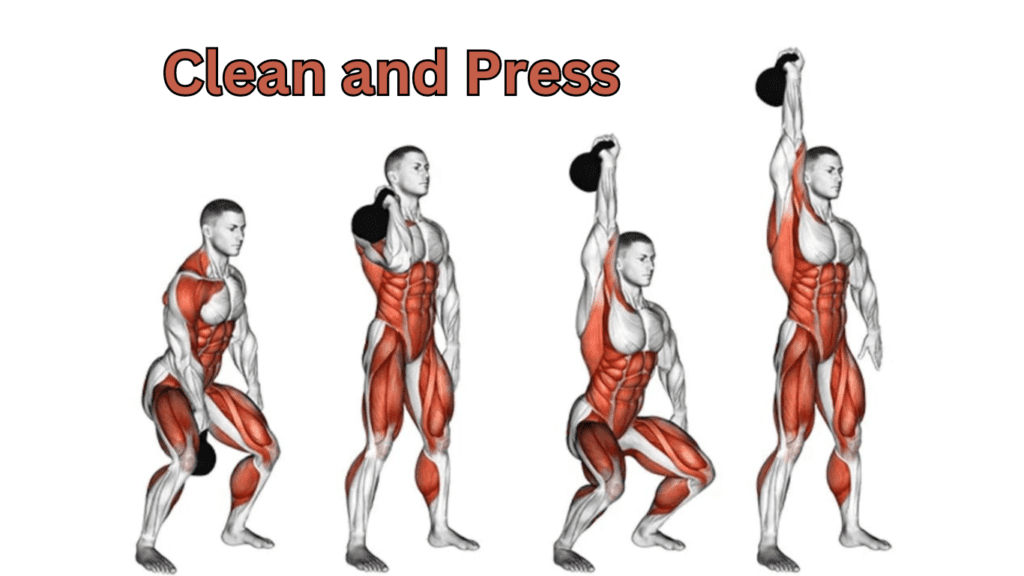
- Clean and Press: Combining the best of both worlds—pulling and pushing—the clean and press is a dynamic movement that works your entire body. It’s great for building upper body strength, shoulder stability, and core engagement.
- Goblet Squat: Simple yet effective, the goblet squat teaches you how to squat with proper form while engaging your core and legs. It’s a fantastic exercise for building lower body strength and improving flexibility.
- Renegade Row: This one’s a real challenge—it combines a push-up position with alternating rows, firing up your chest, back, and core muscles. Perfect for improving upper body strength and stability.
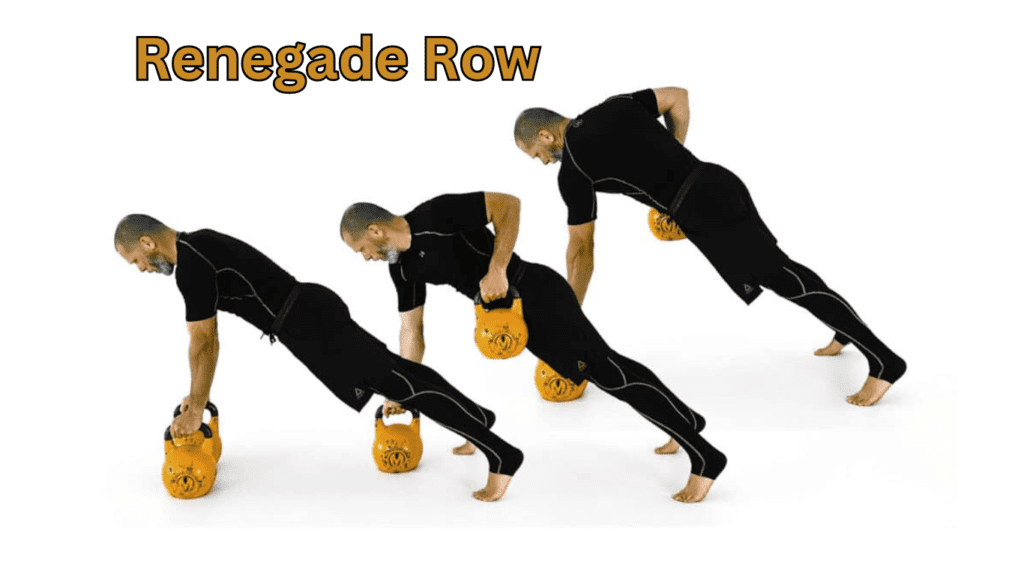
These exercises aren’t just about looking good in the mirror (although that’s a nice bonus). They’re about building functional strength that carries over into your everyday life.
Full-Body Integration with Kettlebells
Now, here’s the secret sauce of functional kettlebell training: full-body integration. What does that mean? It means ditching the isolation exercises and focusing on movements that engage multiple muscle groups at once. When you swing a kettlebell, you’re not just working your arms or legs—you’re working your entire body in sync.
Take the kettlebell swing, for example. It starts with a powerful hip hinge that activates your glutes and hamstrings. As you swing the kettlebell up, your core engages to stabilize your body. Your shoulders and grip strength come into play as you control the momentum of the kettlebell. It’s a symphony of muscle groups working together to perform a single movement.
The same goes for exercises like the Turkish get-up or the clean and press. These movements require coordination and synchronization of muscles across your entire body—from your toes to your fingertips. By integrating these full-body exercises into your routine, you’re not just building strength; you’re improving your overall athleticism and functional capacity.
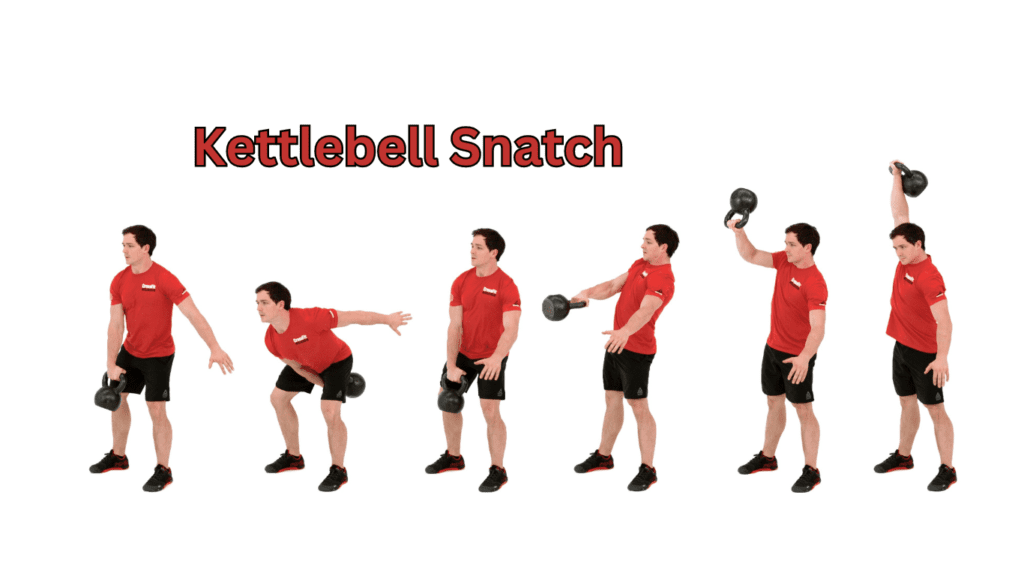
Kettlebell Exercise Benefits Chart
| Exercise | Primary Muscles Targeted | Key Benefits | Real-Life Applications |
|---|---|---|---|
| Kettlebell Swing | Glutes, Hamstrings, Core | Enhances cardiovascular fitness, builds explosive power, improves hip hinge mechanics | Picking up objects from the ground, sports involving jumping and running |
| Kettlebell Goblet Squat | Quadriceps, Glutes, Core | Improves lower body strength, enhances core stability, increases flexibility in hips and ankles | Sitting and standing, lifting heavy objects from a squat position |
| Kettlebell Clean | Shoulders, Back, Biceps, Core | Develops upper body strength, improves coordination and grip strength | Carrying groceries, lifting objects to chest height |
| Kettlebell Snatch | Shoulders, Back, Core, Legs | Builds full-body explosive power, improves shoulder stability, enhances cardiovascular endurance | Overhead lifting, dynamic sports movements |
| Turkish Get-Up | Shoulders, Core, Hips, Legs | Enhances core stability, improves full-body coordination and flexibility, strengthens multiple muscle groups | Getting up from the floor, carrying awkwardly shaped objects |
| Kettlebell Press | Shoulders, Triceps, Core | Builds upper body strength, improves shoulder stability and mobility | Pushing open heavy doors, lifting items overhead |
| Kettlebell Row | Back, Biceps, Core | Strengthens upper back and biceps, enhances core stability, improves posture | Pulling doors open, carrying heavy items |
| Kettlebell Windmill | Shoulders, Core, Hips, Legs | Enhances core strength, improves shoulder stability and flexibility, increases hip mobility | Reaching and lifting objects from different angles, improving balance |
Additional Insights:
- Functional Strength: The exercises listed above emphasize functional strength, which means the strength gained translates directly into real-life activities, making daily tasks easier and safer to perform.
- Coordination and Balance: Many kettlebell exercises require a high degree of coordination and balance, promoting neuromuscular efficiency and reducing the risk of injuries in everyday movements.
- Core Stability: Almost all kettlebell exercises engage the core muscles intensively, leading to improved posture and reduced back pain.
Functional kettlebell training isn’t just about lifting weights—it’s about mastering movement patterns, embracing functional exercises, and integrating your entire body into every workout. Whether you’re a fitness newbie or a seasoned gym rat, kettlebells offer a versatile and effective way to achieve your fitness goals. Stay tuned for our next installment where we’ll dive deeper into advanced techniques, programming strategies, and practical tips to help you become a kettlebell master. Remember, the journey to strength and functionality starts with that first swing.
Mastering Essential Kettlebell Exercises for Functional Training
Alright, folks, buckle up and grab your kettlebells because we’re diving deep into the world of functional kettlebell training once again! In this segment, we’ll break down some essential kettlebell exercises that not only make you stronger but also more functional in your day-to-day shenanigans. Get ready for detailed descriptions, a few laughs, and some tips on how to level up your kettlebell game.
Exercise Descriptions:
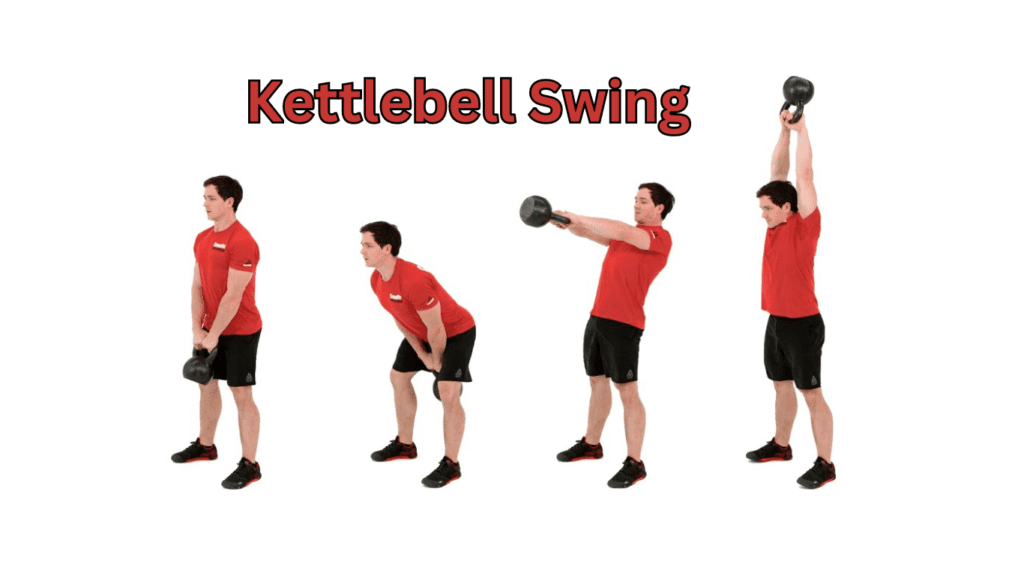
Let’s kick things off with a fan favorite: the kettlebell swing. This exercise is like a dance move for your hips—it’s all about that sweet, sweet hip hinge. Grab a kettlebell with both hands, hinge at your hips like you’re about to sit on a toilet (yes, that’s right), and then swing that kettlebell back between your legs. Now, thrust those hips forward and swing the kettlebell up to shoulder height. It’s a full-body explosion of power that targets your glutes, hamstrings, and core. Plus, it gets your heart pumping faster than a squirrel in a coffee shop.
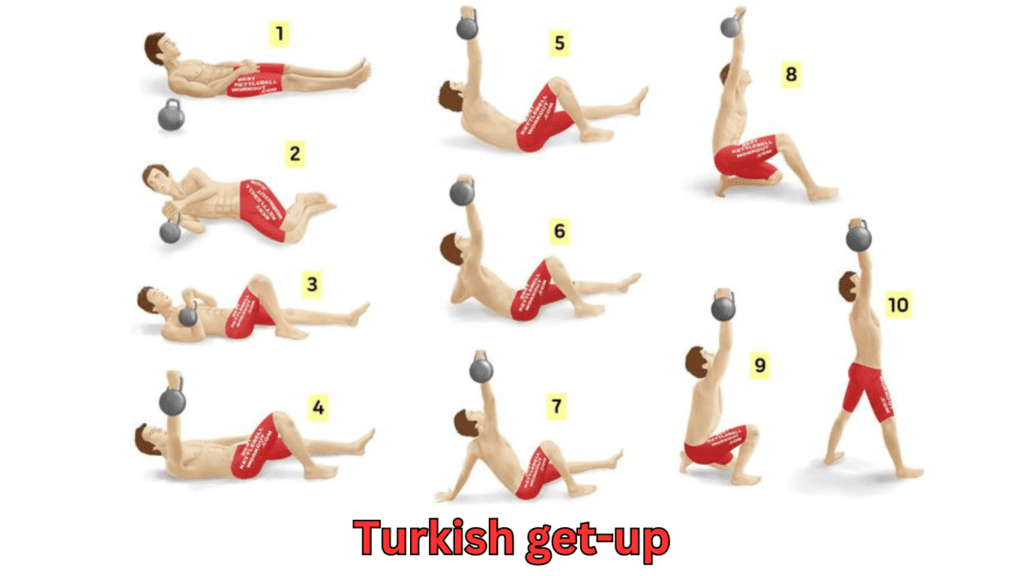
Next up, we’ve got the Turkish get-up. Imagine you’re a knight in shining armor trying to gracefully stand up from lying down without letting your armor clank too loudly. Start lying on your back with a kettlebell in one hand. Use your other hand to press the kettlebell straight up towards the sky. Now, with all the grace of a ballerina, roll onto your elbow, then onto your hand, and finally, lift your hips off the ground into a kneeling position. Stand up, keeping that kettlebell overhead the whole time. Reverse the steps to return to the starting position. It’s a full-body workout that challenges your stability, mobility, and coordination—plus, it looks pretty darn cool.
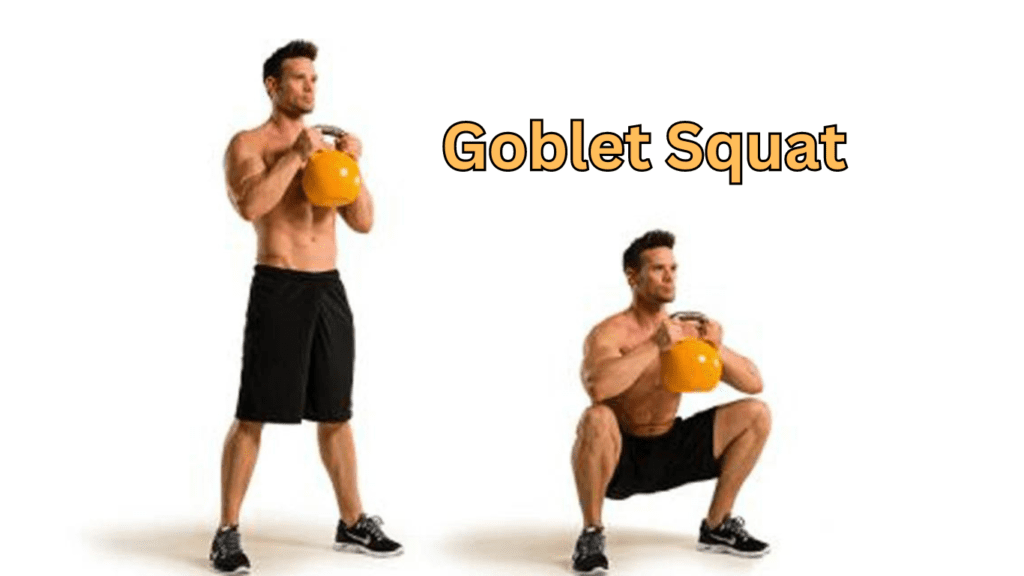
Let’s not forget the goblet squat. Grab a kettlebell by the horns (or handle), hold it close to your chest like it’s your precious, and stand with your feet shoulder-width apart. Now, squat down like you’re about to plop down on a low chair, keeping your chest up and your knees tracking over your toes. Stand back up, squeezing your glutes at the top. It’s a killer leg workout that also fires up your core and teaches you how to squat with perfect form. Plus, holding that kettlebell close gives your arms a little extra love.
Common Mistakes
Now, let’s have a chuckle at some common mistakes people make with kettlebell exercises—and how to avoid them so you don’t end up looking like a confused penguin.
- Using Too Much Weight: Alright, folks, we get it—you’re strong. But swinging a kettlebell that’s heavier than a baby elephant is a surefire way to strain your back and make funny faces in the mirror. Start light, master your form, and then gradually add weight. Your ego might take a hit, but your back will thank you.
- Neglecting Hip Hinge: Remember that hip hinge we talked about? It’s the secret sauce of kettlebell swings and deadlifts. If you’re bending at the waist like a soggy noodle instead of hinging at the hips, you’re missing out on all the booty-building benefits. Practice that hip hinge until it’s as smooth as butter on a hot pancake.
- Rushing Through Reps: Slow down there, Speedy Gonzalez. Kettlebell exercises are about control and finesse, not racing to the finish line. Focus on each movement, feel the burn (in a good way), and savor the sweet satisfaction of a job well done.
Progressions and Regressions
Alright, let’s talk about leveling up (or down) your kettlebell game with some progressions and regressions that’ll make you feel like a fitness wizard.
- Progression: Double Kettlebell Exercises: Feeling like a boss with one kettlebell? Try rocking two at the same time. Double kettlebell swings, cleans, and presses take your strength and coordination to the next level. Just be prepared for some serious forearm burn.
- Regressions: Bodyweight Variations: Not quite ready to conquer the kettlebell? No worries, grasshopper. Start with bodyweight versions of exercises like squats, lunges, and push-ups to build strength and confidence. Once you’ve mastered those, the kettlebell will be waiting with open arms.
- Progression: Complex Movements: Ready for a challenge? Combine kettlebell exercises into complex movements that flow seamlessly from one to the next. Try a kettlebell clean into a squat into an overhead press—it’s like choreographing a dance with iron.
- Regressions: Lighter Loads: If a kettlebell feels heavier than Thor’s hammer, start with a lighter weight until you nail down your technique. Remember, it’s not about how heavy you lift—it’s about how well you lift.
Mastering functional kettlebell training is all about embracing these essential exercises with a smile on your face and a kettlebell in your hand. Whether you’re swinging, squatting, or Turkish get-upping, each movement serves a functional purpose that makes you stronger, fitter, and more capable in your everyday adventures. So, grab your kettlebell, unleash your inner fitness ninja, and let’s swing, squat, and press our way to functional greatness. Stay tuned for more tips, tricks, and maybe a few more laughs in our next installment.
Crafting Your Perfect Functional Kettlebell Workout: Serious Advice with a Side of Humor
Hey there, kettlebell connoisseurs! Ready to turn those swings and snatches into a masterpiece of functional fitness? In this segment, we’re diving into the art of creating a functional kettlebell training workout that’s as effective as it is enjoyable. Get your kettlebells ready, because we’re about to blend serious advice with a sprinkle of humor to keep you entertained and informed.
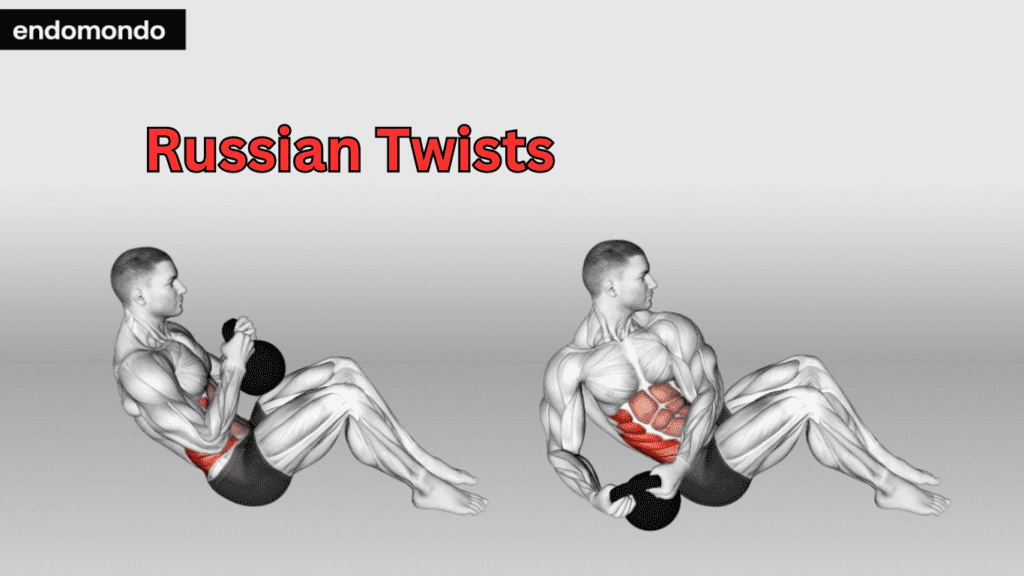
Sample Workouts
Let’s start with the main course: sample workouts that’ll leave you sweating like a marathon runner in a sauna. Whether you’re aiming for strength, endurance, or mobility, we’ve got a kettlebell workout recipe to satisfy your fitness cravings.
- Strength Stravaganza
- Warm-Up: Start with a dynamic warm-up to get your muscles fired up and ready to rumble. Think jumping jacks, high knees, and a few hip circles to get those joints lubricated.
- Main Course: For strength gains, focus on compound movements that recruit multiple muscle groups. Try 5 rounds of:
- 10 kettlebell swings (the classic for building posterior chain power)
- 8 goblet squats (because who doesn’t love a good squat session?)
- 6 kettlebell cleans (to master that graceful transition from pull to press)
- Rest for 1 minute between rounds, and don’t forget to adjust the kettlebell weight to challenge yourself without compromising form.
- Endurance Extravaganza
- Warm-Up: Jump-start your heart with a 5-minute jog or brisk walk, followed by some dynamic stretches to loosen up those limbs.
- Main Course: Endurance is all about sustaining effort over time, so think high reps and moderate weights. Try this circuit:
- 12 Turkish get-ups (one on each side for that full-body burn)
- 15 kettlebell snatches per arm (to skyrocket your heart rate and test your coordination)
- 20 Russian twists (because your abs deserve some love too)
- Complete 3 rounds with minimal rest between exercises to keep that endurance engine revving.
- Mobility Mayhem
- Warm-Up: Ease into it with some foam rolling and dynamic stretches focused on increasing joint mobility. Move like a cat preparing for a ninja mission.
- Main Course: Mobility workouts should flow like water, focusing on smooth, controlled movements. Try this flow:
- 10 halos (to loosen up those shoulders and get the blood flowing to your brain)
- 8 bottom-up presses (for stability and strength from unique angles)
- 12 windmills (because who doesn’t want to feel like a windmill in the breeze?)
- Perform each exercise with deliberate control and aim for 2-3 rounds to improve your range of motion and flexibility.
Remember, these sample workouts are just a starting point. Feel free to mix and match exercises, adjust reps and sets, and add your own flavor to keep things interesting. After all, fitness should be as fun as it is effective!
Customization Tips
Now, let’s talk about personalization—because one size does not fit all when it comes to kettlebell workouts. Here are some tips to customize your workout to fit your needs and fitness level like a tailored suit:
- Adjust the Weight: Don’t be afraid to swap out kettlebells of different sizes depending on the exercise. Use heavier weights for strength-focused exercises and lighter ones for endurance or mobility workouts.
- Modify Reps and Sets: If an exercise feels too easy or too challenging, tweak the number of reps and sets accordingly. Challenge yourself while maintaining good form, and don’t forget to listen to your body—it’s smarter than you think.
- Mix Up Your Routine: Keep boredom at bay by changing up your workouts regularly. Alternate between different types of workouts (strength, endurance, mobility) throughout the week to keep your muscles guessing and your mind engaged.
- Incorporate Progressions: Once you’ve mastered the basics, level up with more advanced kettlebell techniques or add complexity to your existing exercises. Progression keeps your workouts fresh and your gains flowing.
Remember, your kettlebell workout should be as unique as you are. Embrace the quirks, adjust as needed, and enjoy the journey to a fitter, stronger you.
Warm-Up and Cool-Down
Ah, the unsung heroes of any workout: the warm-up and cool-down. Think of them as the opening act and grand finale of your fitness performance—they set the stage for success and ensure a graceful exit.
- Warm-Up: Before diving into kettlebell madness, warm up with dynamic movements like leg swings, arm circles, and bodyweight squats. This gets your blood pumping, increases muscle temperature, and prepares your body for action. Remember, a warmed-up body is a happy body.
- Cool-Down: After rocking your kettlebell workout, it’s time to cool down like a boss. Spend 5-10 minutes on static stretching to lengthen those hard-working muscles and improve flexibility. Focus on areas that feel tight or worked during your workout—your body will thank you later.
- Foam Rolling: If you’re feeling extra fancy, grab a foam roller and treat yourself to a post-workout massage. Roll out those knots and release tension for faster recovery and happier muscles.
And there you have it, folks—a recipe for creating your perfect functional kettlebell training workout. Mix in some laughter, sprinkle with determination, and enjoy the journey to a stronger, fitter, and more functional you. Stay tuned for more kettlebell wisdom and maybe a few more puns in our next installment. Until then, swing on, my friends!
Real-Life Applications of Functional Kettlebell Training
Alright, folks, let’s put on our serious faces and talk about the not-so-serious benefits of functional kettlebell training in everyday life and sports performance. Because who says you can’t lift groceries like a champ or sprint like a cheetah after swinging some iron? Let’s dive into how kettlebell training can make your daily grind and athletic endeavors a whole lot more entertaining.
Daily Activities
First up, let’s talk about how functional kettlebell training turns mundane tasks into feats of strength and agility. Picture this: you’re at the grocery store, eyeing that family-sized watermelon like it’s the ultimate kettlebell challenge. Thanks to your newfound kettlebell prowess, lifting that melon is a breeze. Your grocery bags feel lighter, your posture is impeccable (no more slouching!), and you’re the envy of every shopper in the produce aisle.
And let’s not forget about playing with the kiddos. When your mini-humans demand piggyback rides or impromptu wrestling matches, you’re ready. Kettlebell swings have turned you into the superhero they always knew you could be—lifting, tossing, and spinning them around with ease. It’s not just playtime; it’s functional bonding time.
Athletic Performance
Now, onto the serious business of athletic performance—because who doesn’t want to shave seconds off their sprint time or hit that home run with a little extra oomph? Athletes, listen up! Functional kettlebell training isn’t just for lifting heavy things; it’s for optimizing your sports performance in ways you never imagined.
Take sprinters, for example. Those explosive kettlebell swings translate directly to faster starts and more powerful strides. Your legs are like turbocharged pistons, propelling you down the track with the grace of a gazelle and the speed of, well, a really fast gazelle.
And let’s talk about the ballers—the basketball players, the soccer stars, the weekend warriors who live for the game. Kettlebell training enhances your agility, balance, and coordination—all crucial for making those game-winning plays. Imagine dribbling past defenders with the finesse of a ninja and scoring that buzzer-beater like it’s just another day at the office (except way more fun).
The Fun Side of Functional
Alright, so we’ve covered how functional kettlebell training makes everyday activities feel like a walk in the park (a park filled with kettlebells, of course) and how it turbocharges athletic performance like nobody’s business. But let’s not forget the fun factor—the joy, the laughter, and the sheer satisfaction of mastering a new skill.
Picture yourself at the park, swinging kettlebells with your friends. You’re sweating buckets, laughing hysterically, and maybe even inventing new kettlebell moves that could rival the moonwalk. It’s not just exercise; it’s a social event, a bonding experience, and a chance to show off your kettlebell swagger.
And hey, who says you can’t turn your kettlebell workout into a game? Challenge your workout buddy to a kettlebell relay race or see who can hold a Turkish get-up the longest (spoiler alert: it’s harder than it looks). Mix in some friendly competition, throw in a few silly bets (loser buys smoothies!), and suddenly, your workout becomes the highlight of your day.
Functional kettlebell training isn’t just about lifting weights—it’s about enhancing your life, boosting your performance, and having a darn good time while you’re at it. Whether you’re lifting groceries with superhero strength or sprinting like a cheetah on game day, kettlebell training equips you with the tools you need to thrive in every aspect of life.
So, grab your kettlebell, embrace the challenge, and remember to laugh along the way. Fitness should be fun, functional, and filled with kettlebell-induced joy. Stay tuned for more tips, tricks, and maybe even a few more laughs in our next installment. Until then, keep swinging, keep smiling, and keep conquering your kettlebell kingdom like the functional fitness royalty you are!
Inspiring Success Stories: How Functional Kettlebell Training Changed Lives
Meet Ivan—a dedicated bodybuilder who spent hours in the gym, chasing gains and pushing himself to the limit. Despite his efforts, Ivan found himself stuck in a plateau. His muscles were strong, but he felt something was missing in his training. That’s when he discovered functional kettlebell training.
Ivan was intrigued by the idea of using kettlebells for more than just lifting weights. He started with the basics, learning to swing and clean the kettlebell with precision. At first, it was a challenge—like learning a new dance—but Ivan persisted. He realized that kettlebell training wasn’t just about building muscle; it was about moving more efficiently and functionally.
Like any journey, Ivan faced setbacks along the way. There were days when he struggled with technique or felt frustrated with his progress. But each setback became a lesson. Ivan adjusted his approach, honed his skills, and slowly began to see improvements.
One day, Ivan noticed a difference. His movements were smoother, his strength felt more integrated, and his overall athleticism soared. He wasn’t just lifting weights anymore; he was mastering movements that improved his everyday activities and made him feel more agile than ever.
And then there’s Gloria—a vibrant individual who struggled with chronic back pain. For years, Gloria’s discomfort made simple tasks challenging. She searched for exercises that wouldn’t aggravate her condition and stumbled upon kettlebell training.
Gloria started cautiously, under the guidance of a knowledgeable trainer. She focused on exercises that strengthened her core and improved her posture—essential elements for managing her back pain. At first, it was intimidating. Gloria wondered if she could handle the intensity of kettlebell workouts.
But with each session, Gloria grew stronger and more confident. She learned to listen to her body, adjusting movements as needed to avoid aggravating her back. There were setbacks, of course—days when her pain flared up and she had to take a step back. But Gloria didn’t give up. She persisted, knowing that each day brought her closer to feeling stronger and more capable.
Slowly, Gloria noticed a shift. The dull ache in her lower back began to fade as her core muscles grew stronger and more supportive. Kettlebell training wasn’t just about relieving her pain; it was about reclaiming her strength and rediscovering her joy in movement.
Today, Ivan and Gloria are shining examples of the transformative power of functional kettlebell training. Their journeys remind us that fitness isn’t just about lifting weights or relieving pain—it’s about embracing challenges, overcoming setbacks, and discovering the resilience within us.
Their stories inspire us to push beyond our limits, embrace new ways of training, and celebrate every small victory along the way. Whether you’re striving for athletic prowess like Ivan or seeking relief and empowerment like Gloria, kettlebell training offers a pathway to achieving your goals and living a more functional, fulfilling life.
Mastering Safety and Injury Prevention,Additional Tips and Some More Answers
Alright, folks, let’s get serious about safety and injury prevention in functional kettlebell training. We’re diving deep into the nitty-gritty to ensure you swing those kettlebells with confidence and finesse—no injuries allowed! So, grab your kettlebell (carefully!), and let’s debunk myths, dispense expert advice, and tackle FAQs with a dash of humor and a whole lot of wisdom.
Quotes and Expert Insights
First things first, let’s hear what the experts have to say about functional kettlebell training:
Dr. Kettlebell Guru says, “Kettlebell training is not just about lifting weights; it’s about mastering movement patterns that enhance everyday function.”
Coach SwingMaster adds, “Proper technique is key. Swinging a kettlebell with sloppy form is like dancing the tango with two left feet—awkward and prone to mishaps!”
Now that we’ve got the experts’ seal of approval, let’s dive into some advanced tips for those looking to kick their kettlebell game up a notch.
Advanced Tips for Kettlebell Connoisseurs
So, you’ve mastered the basics and want to level up your kettlebell prowess? Here’s how to become a kettlebell ninja without the bruises:
- Progressive Overload: Gradually increase the weight of your kettlebell to challenge your muscles and stimulate growth. Just like upgrading from a bicycle to a rocket ship—steady progress is the name of the game!
- Variety is the Spice of Fitness: Mix up your workouts with different kettlebell exercises. From swings to snatches, each move targets different muscles and keeps boredom at bay. Think of it as a fitness buffet—always something new to try!
- Rest and Recovery: Don’t skip rest days! Your muscles need time to repair and grow stronger. Remember, even kettlebell warriors need to recharge their batteries.
Now, let’s bust some myths and set the record straight on kettlebell training.
Dispelling Myths with Facts
Myth: Kettlebells are only for bulking up. Fact: Kettlebells improve functional strength, agility, and cardiovascular fitness—perfect for everyday activities and athletic performance.
Myth: Kettlebell swings are bad for your back. Fact: When done with proper form, kettlebell swings strengthen your core and back muscles, reducing the risk of injury.
Myth: You need fancy equipment for effective kettlebell workouts. Fact: All you need is a kettlebell and determination. No frills, just functional fitness!
Now, let’s tackle some burning FAQs about kettlebell training.
Answering FAQs Like a Pro
Q: Can kettlebell training help with weight loss? A: Absolutely! Kettlebell workouts torch calories and build lean muscle mass, making them a potent tool for shedding pounds.
Q: How often should I do kettlebell workouts? A: Aim for 2-3 sessions per week to allow for adequate recovery and maximum gains.
Q: I’m a beginner. Where do I start? A: Begin with lighter weights and focus on mastering basic movements like swings, presses, and squats. Build your strength and confidence gradually.
Alright, now that we’ve covered the essentials, let’s talk about the golden rule of kettlebell training—proper form.
Emphasizing Proper Form for Injury Prevention
Imagine your body is a finely tuned instrument, and kettlebell training is the symphony. Here’s how to conduct your workout with grace and precision:
- Engage Your Core: Brace your core muscles throughout each movement to protect your spine and maintain stability. Think of it as giving your abs a hug!
- Hinge, Don’t Bend: During swings and deadlifts, hinge at your hips rather than rounding your back. This protects your spine and maximizes power generation from your legs and hips.
- Smooth Operator: Avoid jerky movements. Smooth, controlled motions reduce the risk of muscle strains and joint stress. You’re not in a rush—enjoy the rhythm of the swing!
Now, let’s wrap it up with some injury prevention tips to keep you swinging safely.
Injury Prevention Tips: Stay Safe and Swing Smart
- Start Slow: Don’t rush into heavy kettlebell workouts. Master the technique with lighter weights first.
- Listen to Your Body: If something feels off, stop and reassess. Pain is not gain—adjust your technique or seek guidance from a qualified trainer.
- Warm-Up Wisely: Prepare your muscles and joints with dynamic stretches and light cardio before diving into kettlebell exercises. A warmed-up body is a happy body!
- Cool Down: Don’t skip the cooldown! Stretching post-workout helps prevent muscle tightness and soreness.
Practical Tips and Facts for Functional Kettlebell Training Chart
| Tip/Fact | Details | Exercise Examples | Muscles Targeted | Training Tips |
|---|---|---|---|---|
| Start with the Basics | Begin with foundational exercises to build strength and form. | Swings, Goblet Squats, Turkish Get-Ups | Full body, core, legs | Use light weights to master form before progressing to heavier kettlebells. |
| Focus on Form | Proper form is crucial to avoid injury. | All exercises | Full body | Consider working with a trainer initially to ensure correct technique. |
| Progress Gradually | Increase the weight and complexity of exercises gradually. | Deadlifts, Presses, Rows | Varies based on exercise | Add weight in small increments to avoid overtraining and injuries. |
| Incorporate into Routine | Use kettlebells in circuit training to enhance cardiovascular fitness and muscular endurance. | Circuit combining swings, squats, presses | Full body, cardiovascular system | Keep rest periods short to maintain an elevated heart rate. |
| Benefits of Kettlebell Training | Improves functional strength, flexibility, and coordination; effective for fat burning and cardiovascular health. | N/A | Full body | Aim for a mix of strength, flexibility, and endurance exercises. |
| Common Mistakes to Avoid | Avoid swinging too fast, using too heavy weights initially, and neglecting a proper warm-up and cool-down. | N/A | N/A | Warm up with dynamic stretches and cool down with static stretches. |
| Recommended Frequency | Train 2-3 times per week, allowing rest days in between for muscle recovery. | N/A | N/A | Listen to your body and avoid training the same muscle groups on consecutive days. |
| Variety of Exercises | Mix exercises to work different muscle groups and keep workouts interesting. | Cleans, Snatches, Presses | Shoulders, back, legs, core | Regularly change your routine to target all muscle groups and prevent plateaus. |
Remember, kettlebell training is about more than just lifting weights—it’s about improving your functional fitness, enhancing your everyday movements, and having a blast while doing it. So, swing smart, stay safe, and embrace the journey to a stronger, fitter you!
Embracing the Power
Congratulations on reaching the final stretch of our journey into the world of functional kettlebell training! We’ve swung, lifted, and learned together, uncovering the transformative benefits of this dynamic form of exercise. Now, let’s wrap it up with a bow, summarizing our insights and inspiring you to take action towards a stronger, more functional you.
Throughout this comprehensive guide, we’ve explored what makes functional kettlebell training unique. From its ability to enhance mobility, stability, and strength to its real-life applicability in daily activities, kettlebell training proves to be more than just lifting weights—it’s about mastering movement patterns that improve how we move and function in the world.
We delved into the science behind kettlebell training, understanding how biomechanics play a crucial role in translating these exercises into everyday movements. By focusing on fundamental movement patterns like pushing, pulling, hinging, and squatting, kettlebell exercises engage multiple muscle groups, promoting full-body integration and functional fitness.
We’ve covered essential kettlebell exercises, from the powerful swing to the graceful Turkish get-up, highlighting their functional benefits and explaining how each movement contributes to overall strength and agility. Along the way, we laughed and learned about common mistakes (like swinging with two left feet!) and discovered progressions and regressions to tailor workouts to different fitness levels.
Our journey wouldn’t be complete without addressing safety and injury prevention. We emphasized the importance of proper form and provided practical tips to train safely, ensuring that every swing and lift contributes to your fitness journey without setbacks.
Remember Ivan and Gloria? Their stories showed us firsthand how functional kettlebell training can transform lives—whether it’s overcoming fitness plateaus or managing chronic pain. Their journeys remind us that persistence, proper technique, and a touch of humor can turn challenges into triumphs.
Now, it’s your turn to take the reins. Are you ready to incorporate functional kettlebell training into your routine? Whether you’re aiming to build strength, improve mobility, or enhance athletic performance, kettlebells offer a versatile tool for achieving your fitness goals.
Start small and build momentum. Begin with lighter weights, focusing on mastering the basics before progressing to more advanced exercises. Listen to your body, adjust as needed, and celebrate every milestone along the way. Just like mastering any skill, consistency and dedication will yield results.
We invite you to share your experiences or questions in the comments below. Have you tried kettlebell training before? What are your favorite exercises? Your insights can inspire others on their fitness journey and foster a community of support and encouragement.
For those eager to dive deeper into kettlebell training, consider subscribing to our blog for more fitness tips, workout routines, and expert advice. We’re here to guide you every step of the way, ensuring you have the tools and knowledge to succeed.
Before you go, here are a few equipment recommendations to kickstart your kettlebell journey. Look for quality kettlebells that suit your fitness level and goals. Invest in a range of weights to accommodate different exercises and progression over time. A sturdy mat and comfortable workout attire will enhance your training experience, ensuring you feel supported and confident during each session.
As you embark on this journey of strength, mobility, and functional fitness, remember that every swing and lift brings you closer to a healthier, more resilient you. Let’s continue swinging towards our goals with determination and a smile. Here’s to your success in mastering functional kettlebell training—let’s lift, swing, and conquer together!


